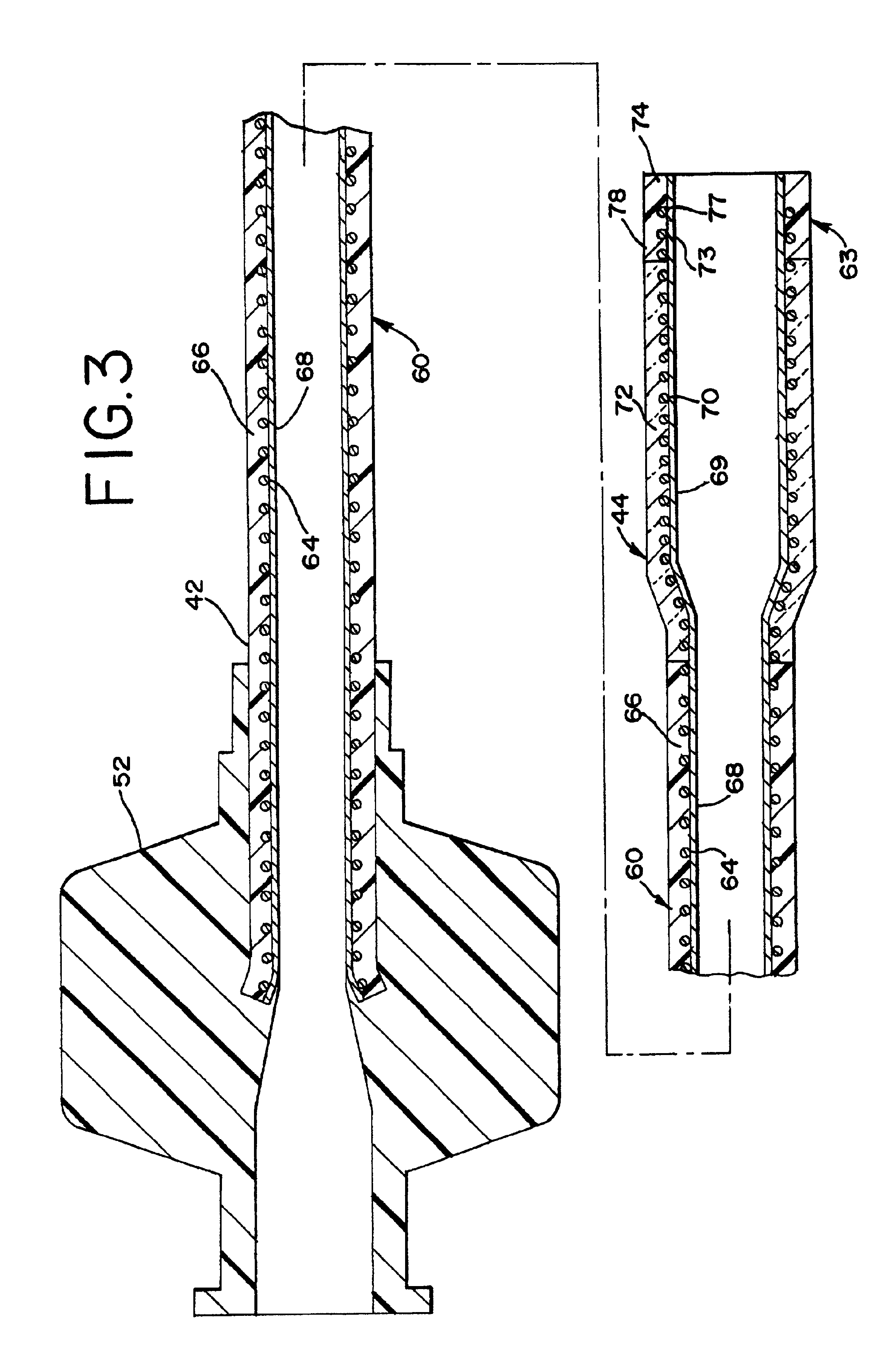Stent delivery system having delivery catheter member with a clear transition zone
a technology of transition zone and stent, which is applied in the field of expandable intraluminal medical devices, can solve the problems of inability to use stents in some vessels, inability to meet the needs of patients,
- Summary
- Abstract
- Description
- Claims
- Application Information
AI Technical Summary
Benefits of technology
Problems solved by technology
Method used
Image
Examples
Embodiment Construction
[0028]Referring now to the Figures wherein like numerals indicate the same element throughout the views, there is shown in FIGS. 1 and 2 a self-expanding stent delivery system 1 made in accordance with the present invention. System 1 comprises inner and outer coaxial tubes. The inner tube will be referred to as the shaft 10 and the outer tube will be referred to as the sheath 40. Shaft 10 has proximal and distal ends 12 and 14 respectively. The proximal end 12 of the shaft has a Luer guidewire hub 5 attached thereto. The shaft 10 has a proximal portion which is preferably made from a relatively stiff material such as stainless steel, Nitinol, or any other suitable material known to those of ordinary skill in the art. The shaft 10 also includes a distal portion 18 which is preferably made from a co-extrusion high density polyethylene for the inner portion and polyamide for the outer portion. Other suitable materials for distal portion 18 known to those of ordinary skill in the art in...
PUM
 Login to View More
Login to View More Abstract
Description
Claims
Application Information
 Login to View More
Login to View More - R&D
- Intellectual Property
- Life Sciences
- Materials
- Tech Scout
- Unparalleled Data Quality
- Higher Quality Content
- 60% Fewer Hallucinations
Browse by: Latest US Patents, China's latest patents, Technical Efficacy Thesaurus, Application Domain, Technology Topic, Popular Technical Reports.
© 2025 PatSnap. All rights reserved.Legal|Privacy policy|Modern Slavery Act Transparency Statement|Sitemap|About US| Contact US: help@patsnap.com



